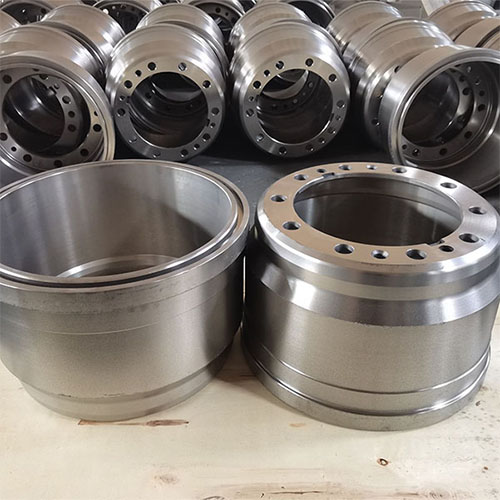The Essential Guide to Brake Drums: Functions, Benefits, and Maintenance Tips
What Are Brake Drums?
A brake drum is a cylindrical component attached to a vehicle’s wheel hub. It works in tandem with brake shoes, springs, and other hardware to create friction and slow down or stop the vehicle. When the driver presses the brake pedal, hydraulic pressure forces the brake shoes outward against the inner surface of the brake drum, generating the necessary friction to halt wheel rotation.
Key components of a brake drum assembly:
Brake Drum: The rotating metal cylinder.
Brake Shoes: Friction material that presses against the drum.
Wheel Cylinder: Activates the shoes via hydraulic pressure.
Return Springs: Retract the shoes after braking.
Why Are Brake Drums Still Relevant?
Despite the rise of disc brakes, brake drums remain widely used for several reasons:
Cost-Effectiveness
Brake drums are simpler in design and cheaper to manufacture than disc brakes, making them ideal for budget-friendly vehicles and commercial fleets.
Durability in Heavy-Duty Applications
Trucks, buses, and trailers often rely on brake drums due to their ability to handle high loads and prolonged stress.
Self-Energizing Effect
The rotational force of the brake drum amplifies the friction generated by the shoes, requiring less hydraulic pressure to achieve strong braking.
Integrated Parking Brake
Many vehicles with rear brake drums use the same assembly for the parking brake, simplifying design and reducing costs.
Common Issues with Brake Drums
While reliable, brake drums can face challenges over time:
Overheating: Prolonged braking can cause heat buildup, leading to warping or cracking.
Wear and Tear: The inner surface of the brake drum may develop grooves or become uneven, reducing efficiency.
Corrosion: Exposure to moisture and road salt can cause rust, especially in older brake drums.
Maintenance Tips for Brake Drums
To maximize the lifespan of your brake drums, follow these guidelines:
Regular Inspections
Check brake drums every 12,000–15,000 miles for cracks, warping, or excessive wear.
Cleanliness Matters
Remove brake dust and debris from the brake drum assembly to prevent premature wear.
Resurface or Replace
If the brake drum surface is scored or uneven, machining (resurfacing) can restore smoothness. Severe damage requires replacement.
Upgrade Materials
Consider alloy or carbon-infused brake drums for high-performance or towing applications.
Brake Drums vs. Disc Brakes: A Quick Comparison
|
Feature |
Brake Drums |
Disc Brakes |
|
Cost |
Lower |
Higher |
|
Heat Dissipation |
Moderate |
Superior |
|
Maintenance |
Less frequent |
More frequent |
|
Weight |
Heavier |
Lighter |
The Future of Brake Drums
While disc brakes dominate passenger vehicles, brake drums continue to evolve. Innovations like lightweight composite materials and anti-corrosion coatings are extending their relevance in commercial and electric vehicles (EVs). Hybrid systems combining brake drums with regenerative braking are also emerging, showcasing their adaptability.
Conclusion
Brake drums may not be the most glamorous part of a vehicle, but their reliability, cost efficiency, and versatility ensure they remain indispensable. Whether you’re maintaining a classic car or managing a fleet of trucks, understanding brake drums is key to optimizing safety and performance.
Pro Tip: Always consult a certified mechanic for brake drum repairs or replacements to ensure compliance with safety standards.
Latest News
Contact Us

Name: Ayla
Tel: 008613805354581
E-mail: Ayla@mx-machine.com
WeChat: 008613805354581
Whatsapp: 008613805354581
Add: 3- 302 , No. 1 building , Yanhe West Road, Donglai Street, Longkou City, Yantai City, Shandong Province
 CHINESE
CHINESE ENGLISH
ENGLISH




 WhatsApp
WhatsApp  Mail inquiry
Mail inquiry